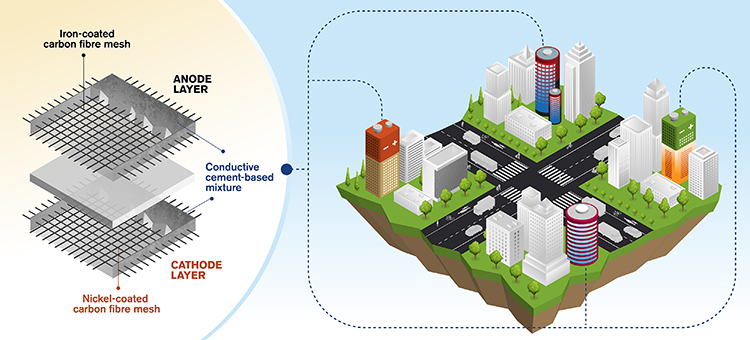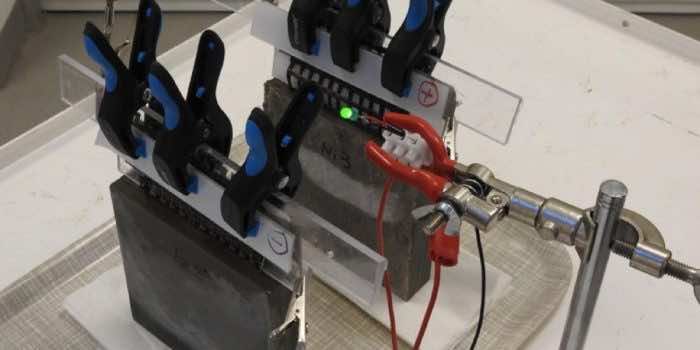Scientists from Sweden have demonstrated the first of its kind concrete battery that would re-shape the energy storage for buildings.
Structural components storing energy is a concept first used in electric cars. However, knowing the idea could work with concrete is newfound.
Scientists at the Chalmers University of Technology are working for developing more sustainable building materials and the research on using concrete as an energy storage source was also conducted.
Concrete is one of the most widely used materials in the world and is energy-intensive to produce. For quite some time, researchers are working on finding out the ways to reduce the carbon footprint of concrete, but that wait is probably over with the authors of the new study having a potential solution.
The new cement-based mixture would have the difference from the conventionally used concrete because it would come with small amounts of short carbon fibers to add flexural strength and conductivity. The scientists also mixed the material with a pair of carbon fiber meshes, the one coated in nickel to act as a cathode and the other coated in iron to play anode, allowing the electrons back and forward as the device is charged and discharged.
The previous designs of the concrete-based batteries were a failure, however, the one developed at the Chalmers University of Technology comes rectifying the previous shortcomings. The researchers settled for the design after some extensive research work, hence brought the world with the first rechargeable concrete battery concept.
Concrete-based batteries are found to be less in capacity, however, this one comes bringing a 10 percent performance boost and has shown an energy density of 7Wh/ square meter of material. The figures remain far low than the capacity of commercial batteries, however, this difference in capacity doesn’t count given the fact that it is made of concrete, which is used to form massive structures.

“We have a vision that in the future this technology could allow for whole sections of multi-story buildings made of functional concrete,” says study author Emma Zhang. “Considering that any concrete surface could have a layer of this electrode embedded, we are talking about enormous volumes of functional concrete.”
If the concept works out for good and as per the researchers’ expectations, it would be a huge innovation in the field of energy storage. The new concept’s key utilizations include buildings would double as energy storage devices, would power LEDs, provide 4G connection in remote areas, and could also connect with solar panels to power sensors built into concrete structures.


